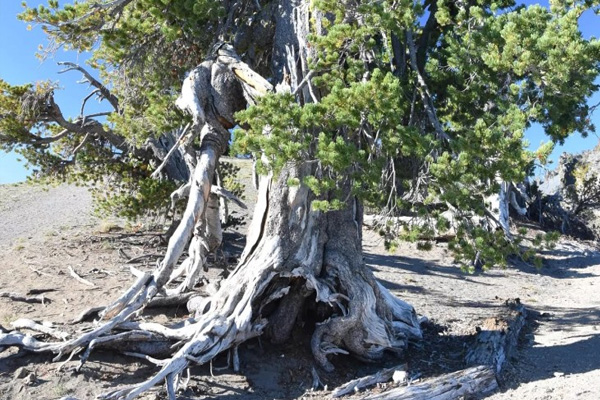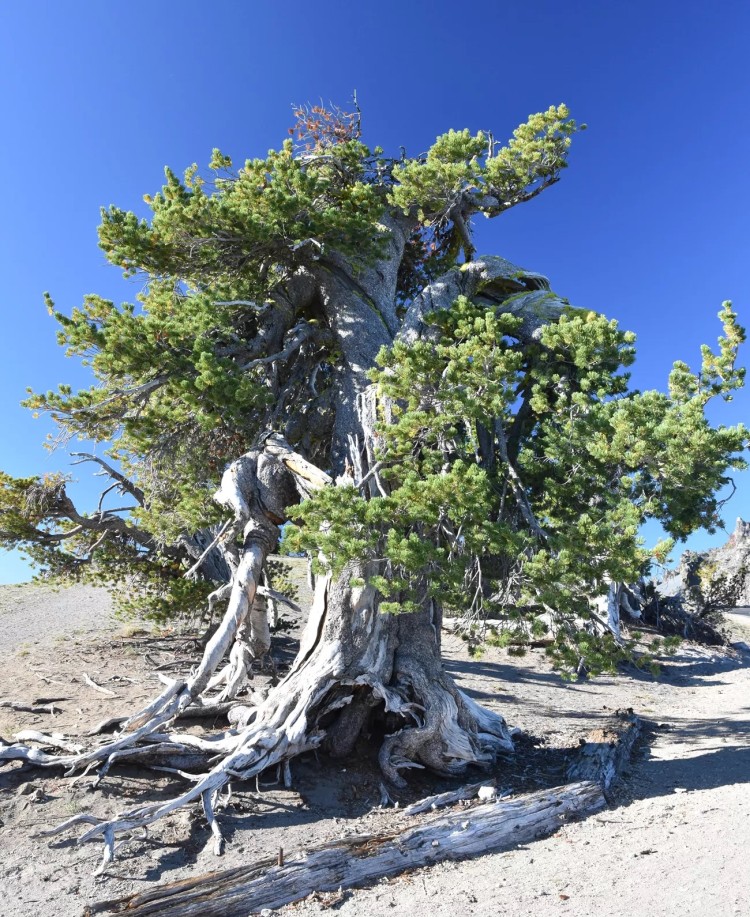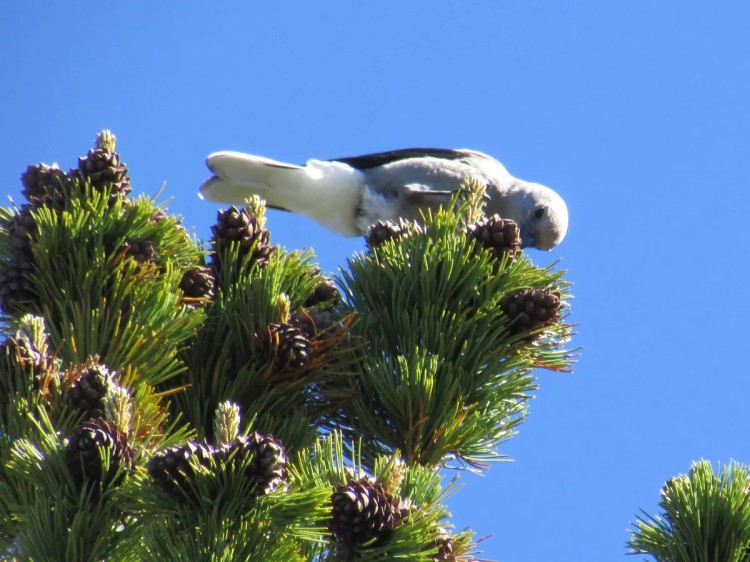Whitebark Pine: What makes this tree so important?

Have you ever pictured what life is like for trees in the subalpine zone? The soil is rocky and thin, offering very little purchase or nourishment for roots. In the summer, strong winds and the sun’s powerful rays strip away moisture, and in the winter, those same powerful winds blast trees with snow and ice. These conditions sound miserable to most of us humans, but they provide the perfect environment for the whitebark pine tree, which thrives in this ecosystem.

Photo credit: Jen Hooke/NPS
Whitebark pine trees are a crucial component of the subalpine ecosystem of Grand Teton National Park. As the highest elevation tree species–they grow as high as 12,100ft (3,700m) above sea level–they hold a lot of influence over the conditions of snow and ice and the availability of food for wildlife living at these elevations.
The whitebark pine is a small tree, standing no taller than 60ft (18m) (although the trees get shorter at the highest elevations) and barely growing to be 5ft (1.5m) wide. Their deep, fast-growing roots and stocky trunks and branches make them powerful resistors of the strong mountain winds. Their long needles and U-shaped branches slow the rate at which snow and ice melt from around their bases, allowing for more downstream water supplies later in the season. Additionally, the seeds within their cones are a nutritious and high-calorie food source for numerous animals including the red squirrel, yellow-bellied marmot, grizzly bear, and Clark’s nutcracker.
The Clark’s nutcracker, in particular, has a special relationship with the whitebark pine tree. These two species depend on each other for survival. The scales of the whitebark’s cones do not open at maturity to release their seeds. Instead, the tree relies on the Clark’s nutcracker to pry the scales open with their strong beaks. The bird will then carry the seeds in a pouch under its tongue and bury them in shallow caches in the soil, sometimes as far as 6 miles (10km) away! Nutcrackers have been known to cache up to 90,000 seeds in a year with a strong seed crop. That’s a lot of seeds to keep track of! As a result, the birds will forget about many of their caches, allowing those seeds to germinate and take root. As a result, the whitebark pine depends on the Clark’s nutcracker for reproduction!

Photo credit: Jen Hooke/NPS
Due to the harsh living conditions of the subalpine ecosystem, the whitebark pine is a slow-growing tree and doesn’t begin producing cones until it is 25-30 years old. The cones themselves then take 2 years to mature. Extensive research on these trees has revealed that peak cone production begins at 60-80 years old and continues for several hundred years.
These factors make the whitebark pine a vital tree species within their ecosystem. Unfortunately, this species is under threat due to naturally-occurring mountain pine beetles and a non-native fungus known as white pine blister rust. The beetles and fungus are threats to whitebark pines all over the West. Warming temperatures are expanding the beetle’s range to higher elevations, and environmental stressors such as drought and disease are weakening the trees and making them more susceptible to attack from beetles. Blister rust forms deadly cankers on the tree’s bark that first targets cone-bearing branches, negatively impacting the tree’s ability to reproduce, and eventually kills the entire tree.
Across the western US, we have seen such a dramatic decline in whitebark pine numbers that the species has been listed as Threatened under the Endangered Species Act, and is currently being considered for the status of Endangered. In fact, it is estimated that more than 325 million whitebark pines have been lost across their range.

Whitebark pine killed by the mountain pine beetle. Photo credit: Tenley Thompson, ETA General Manager
Interestingly, Grand Teton National Park has numerous whitebark pines that are considered the most blister rust-resistant trees in the Greater Yellowstone Ecosystem, and these trees are successfully reproducing, creating seedlings that are also resistant to the fungus. Although tree numbers are still declining, there is currently work being done to better understand these resistant trees and spread their seeds to other habitats with declining numbers.
In September of this year, the National Park Service (NPS) and American Forests signed a five-year agreement to help return the whitebark to its historic range throughout the western US. The partnership will support restoration activities in all national parks that are host to whitebark pine. Projects in Yellowstone and Grand Teton National Parks are part of $44 million in funding from the Inflation Reduction Act, the largest climate and conservation investment in history.
American Forests and NPS are working together to create projects guided by the National Whitebark Pine Restoration Plan–a science-informed strategy that identifies core restoration areas and actions needed to conserve whitebark pine. The two organizations are collaborating with land managers to plant seeds directly into the ground (as opposed to planting seedlings grown in greenhouses), offering a low-impact and cost-effective method to restoring whitebark pine in remote areas.
At EcoTour Adventures, we understand the value and importance of this vital tree species to our ecosystem, and we have witnessed the declining tree population first-hand. We are excited about this new project and the conservation and restoration efforts it entails. The subalpine zone will not be the same without this crucial and impressive tree species, and we hope it will still be here generations from now.













